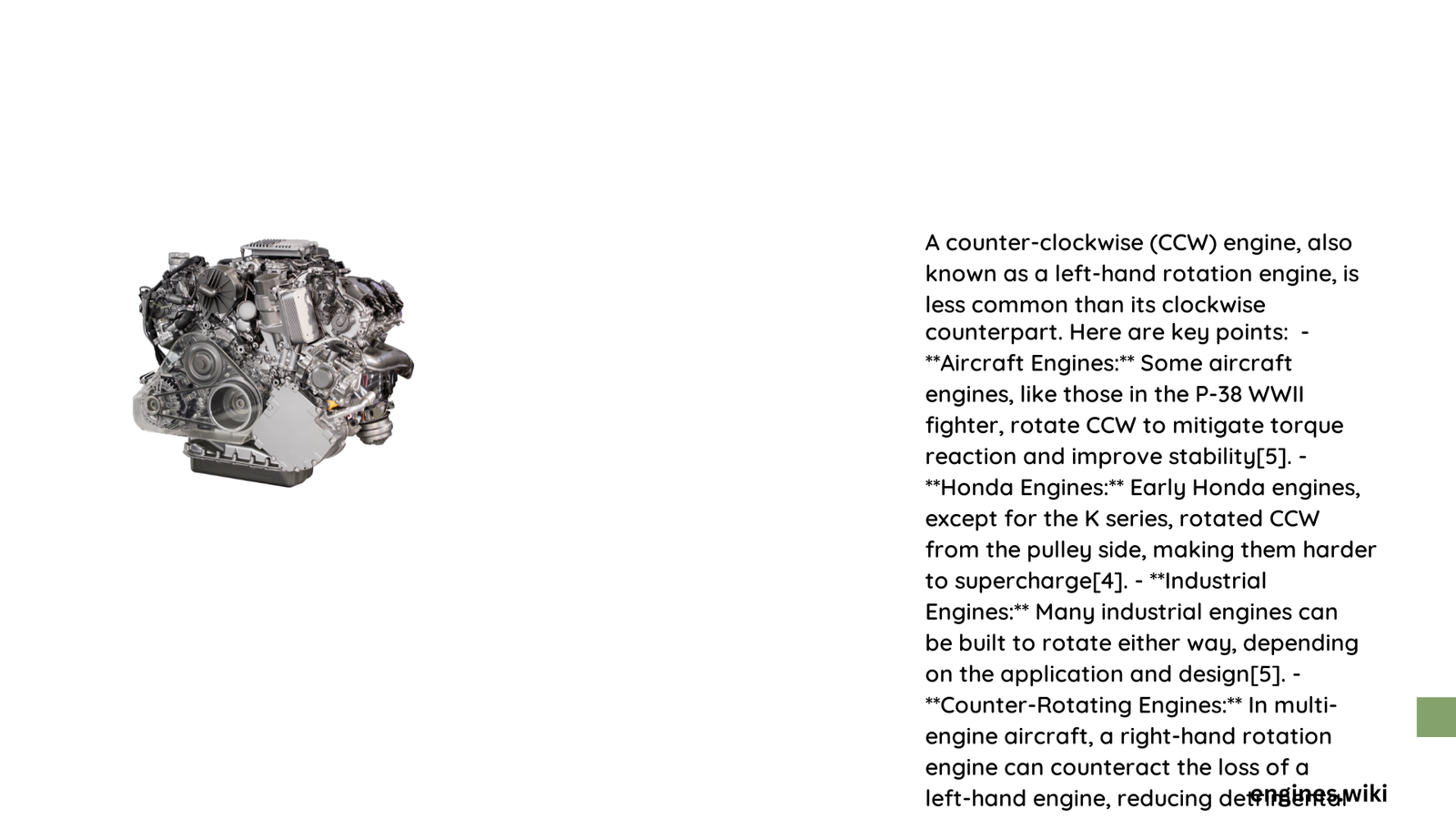Counter clockwise engines represent a specialized mechanical configuration where rotational movement occurs in the opposite direction of traditional engine designs. These unique powerplants offer distinct advantages in specific industrial and automotive applications, providing engineers with innovative solutions for complex mechanical challenges. By rotating against standard directional norms, counter clockwise engines enable precise power transmission and enhanced performance in specialized machinery.
What Makes Counter Clockwise Engines Unique?
How Do Counter Clockwise Engines Differ from Standard Designs?
Counter clockwise engines fundamentally challenge conventional rotational mechanics by generating power through a reverse-directional crankshaft rotation. Unlike traditional engines that rotate clockwise from the flywheel end, these specialized powerplants offer several distinctive characteristics:
Key Differentiating Features
- Reverse Rotational Dynamics: Crankshaft rotates counterclockwise
- Specialized Application Compatibility
- Unique Torque Distribution
- Enhanced Precision in Specific Machinery
What Are the Primary Design Specifications?
For a comprehensive understanding, let’s examine the Cat® C18 Industrial Diesel Engine as a representative counter clockwise engine:
| Parameter | Specification |
|---|---|
| Engine Configuration | Inline 6, 4-Stroke-Cycle Diesel |
| Bore and Stroke | 145 mm x 183 mm |
| Displacement | 18.1 liters |
| Compression Ratio | 16.3:1 |
| Maximum Power | 597 kW (800 HP) |
What Performance Metrics Define Counter Clockwise Engines?
Performance characteristics of counter clockwise engines are determined by several critical factors:
- Torque Generation
- Maximum torque: 3655 Nm at 1400 rpm
-
Consistent torque delivery across varied RPM ranges
-
Power Output Considerations
- Adaptable power ratings between 429-597 kW
-
Optimized for industrial applications
-
Efficiency Parameters
- Turbocharged aftercooled (TA) system
- Direct injection combustion methodology
How Are Counter Clockwise Engines Installed?
Installation Process Requirements
Critical steps for successful counter clockwise engine installation include:
- Precise alignment with mounting base
- Secure fastening using manufacturer-recommended torque specifications
- Comprehensive system connection verification
- Thorough initial performance testing
What Challenges Exist in Counter Clockwise Engine Design?
Potential challenges include:
- Complex alignment procedures
- Specialized manufacturing requirements
- Limited application scenarios
- Higher precision engineering demands
What Maintenance Strategies Ensure Optimal Performance?
Recommended maintenance approaches:
- Regular diagnostic monitoring
- Systematic performance parameter tracking
- Adherence to manufacturer-specified service intervals
- Comprehensive system inspections
Conclusion

Counter clockwise engines represent a sophisticated engineering solution, offering unique advantages in specialized industrial environments. Their intricate design and precise operational characteristics make them invaluable in applications requiring non-traditional rotational dynamics.
Technical Expertise Highlights
- Precise reverse rotational mechanics
- Enhanced industrial application compatibility
- Advanced engineering design principles
Reference:
– Cat® C18 Industrial Diesel Engine Specifications
– Cummins Engine Specification Sheets
– Diesel Engine Technical Documentation
